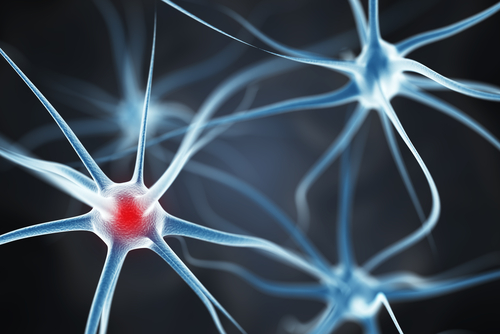Scientists Reveal Architecture of SMN Complex, Altered in SMA

Scientists have revealed the structural architecture of the SMN complex, which is altered in people with spinal muscular atrophy (SMA) due to a deficiency in the SMN protein.
Their findings showed that many of the mutations that cause SMA are part of the central core of the SMN complex, preventing its full development and hindering its function in the cell.
The analysis was published in the journal Nucleic Acids Research, in a study titled “Identification and structural analysis of the Schizosaccharomyces pombe SMN complex.”
SMA is caused by mutations in the SMN1 gene, which carries instructions for the SMN protein that forms a larger SMN complex with eight other proteins. The complex is critical in processing messenger RNA (mRNA), which carries the genetic message from genes to make proteins.
Mutations lead to an SMN protein deficiency which alters the SMN complex, giving rise to widespread defects in mRNA processing in motor neurons, leading to the loss of motor function and progressive muscle weakness.
Functional studies have provided insight into the role of the SMN complex in mRNA processing. Still, a structural understanding of its architecture — which dictates its central function — is limited. This is due, researchers note, to the large, flexible nature of the complex, as methods used to analyze molecular structure work best with rigid molecules.
“This complex is of central importance for our cells because it supports the formation of molecular machines required for the expression of our genes,” Utz Fischer, PhD, the study’s lead researcher, said in a press release.
“However, in order to serve its function in the cell, it must be highly flexible and dynamic. As a result, a structural analysis by traditional strategies has been impossible so far,” Fischer said.
Fischer and his team at the University of Würzburg, in Germany, in collaboration with scientists at the University of Montpellier, in France, instead took an alternative approach — they examined the same SMN complex from a strain of yeast called Schizosaccharomyces pombe (Sp).
The SMN complex of S. pombe is similar to the human version but less flexible because it has five proteins instead of the nine found in people.
“Our starting point was a cooperation with the group of Dr. Rémy Bordonné from Montpellier in France, that enabled us to identify the SMN complex of the yeast Schizosaccharomyces pombe,“ Fischer said.
An initial examination of the S. pombe SMN complex found it was composed of the SMN protein (SpSMN), as well as the proteins Gemin2 (G2), G6, G7, and G8. Of note, the human SMN complex has these same proteins, plus G3, 4, 5, and unrip. Further analysis confirmed the SpSMN complex has the same function as the human complex in processing mRNA.
SpSMN and SpG2, and SpG6, SpG7, and SpG8 were generated, purified, mixed to form the whole SpSMN complex. An analysis revealed the SMN protein bound to G2 and G8, while G7 interacted with G8, and G8 with G6.
To build the entire SpSMN complex structure, the team first solved the atomic-level structure of human G6, G7, and G8 as one combined molecule by X-diffraction analysis, in which a high-intensity X-ray beam is used to determine the arrangement of atoms in crystallized proteins. Because the human and yeast complexes are similar, a matching (homology) model of SpG6/G7/G8 was created.
“In a first step, we visualized, by X-ray diffraction analysis, individual sections that are important for keeping the complex together,” Fischer said.
Next, additional X-ray diffraction experiments showed the SMN protein formed complexes with itself in a process called oligomerization, forming the central body of the SMN complex. Furthermore, the oligomerization of SMN protein was confirmed to be necessary for the formation of the complex and the overall health of the S. pombe yeast.
As nearly 50% of known mutations that cause SMA are located in the SMN protein region that oligomerizes, the team introduced these mutations into the SpSMN complex to determine their effect. Except for one mutation, all the others led to defects in the SMN protein’s ability to oligomerize to form the central body of the SMN complex.
“The mutations causing this disease concentrate in the central body,” said Jyotishman Veepaschit, the study’s co-author. That prevents the full formation of the complex, which cannot properly recruit proteins called Sm proteins to G2, necessary for proper mRNA processing.
Finally, a technique known as small-angle X-ray scattering (SAXS) analyzed the SpSMN complex as a whole. It revealed a central body of oligomerized SMN proteins, each binding to a single G2 protein via a flexible linker. The addition of the G6/G7/G8 protein stabilized the central body SMN complex and lowered the number of oligomerized SMN proteins, reducing the overall flexibility of the complex.
“The combination of X-ray crystallography and SAXS analysis allows us to propose a model for the architecture of the SpSMN complex, which likely also applies to its human counterpart,” the researchers wrote.
“These studies identified the SMN complex as a multivalent hub where Sm proteins are collected in its periphery to allow their joining with [mRNA processing machinery],” they concluded.







